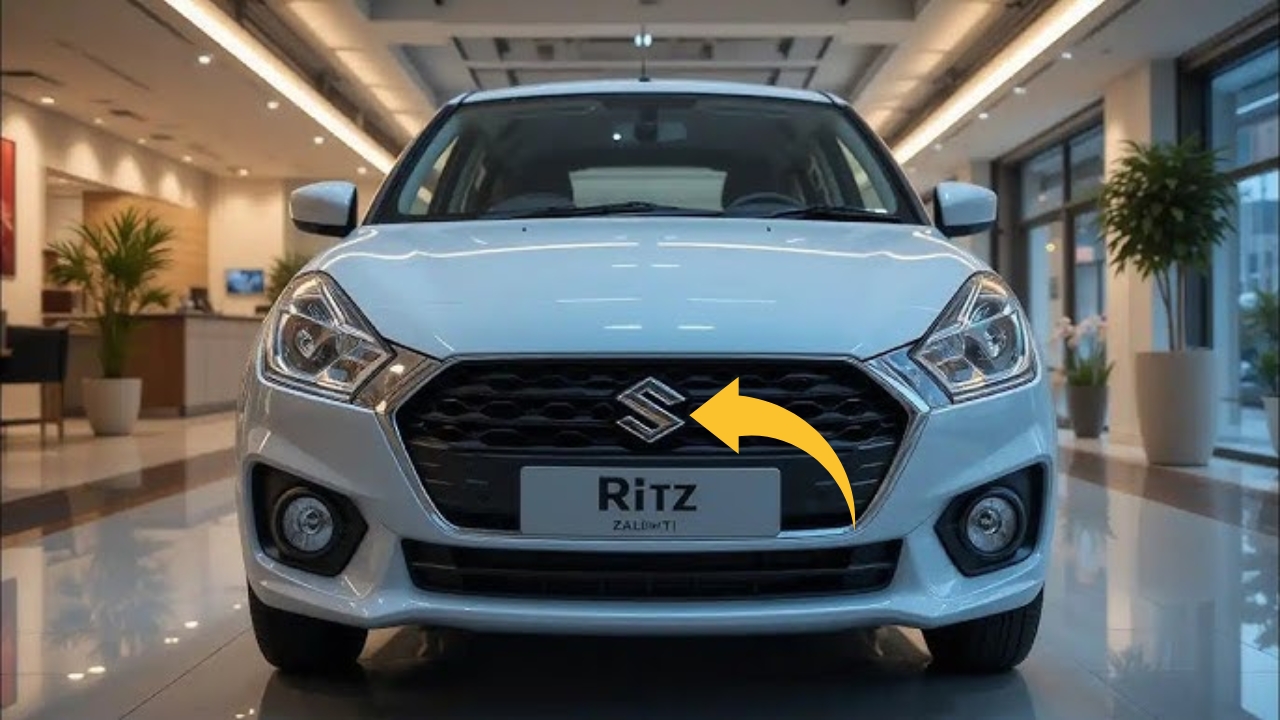Maruti Ritz 2025 : The Indian automotive sector received exciting news this week as Maruti Suzuki confirmed the upcoming launch of the Ritz 2025, marking the return of a beloved hatchback after years of absence. Industry insiders suggest the new model will arrive in showrooms by mid-2025, featuring remarkable fuel efficiency figures that could reshape expectations in the small car segment. This strategic move demonstrates Maruti’s commitment to serving cost-conscious buyers who prioritize running costs without sacrificing modern amenities.
Fuel Economy Takes Center Stage
Engineering teams have reportedly achieved breakthrough efficiency levels through extensive refinement of engine internals and weight reduction strategies. The new powerplant utilizes advanced combustion chamber designs that extract maximum energy from every drop of fuel, while friction-reducing technologies minimize parasitic losses throughout the drivetrain. Wind tunnel testing has shaped every exterior surface to reduce aerodynamic drag, contributing to highway efficiency that rivals much smaller vehicles.
The transmission receives equal attention, with gear ratios optimized for Indian driving conditions where stop-and-go traffic dominates daily commutes. Idle stop-start technology prevents fuel wastage during traffic signals, automatically restarting the engine seamlessly when the clutch engages. These combined improvements reportedly deliver mileage figures that exceed 30 kilometers per liter under standard testing conditions, though real-world numbers will naturally vary based on driving patterns.
Design Evolution Maintains Practical Focus
While efficiency drives development, the new Ritz doesn’t ignore contemporary styling expectations. The tall-boy design that made the original practical returns with refined proportions that look modern rather than dated. LED lighting elements reduce electrical load while providing superior illumination, and the grille design channels cooling air precisely where needed, reducing unnecessary drag.
The stance appears more planted thanks to wider track dimensions, improving stability without significantly increasing overall width for tight parking situations. Wheel designs balance aesthetic appeal with aerodynamic efficiency, using covers that smooth airflow while remaining visually interesting. Paint options include new formulations that maintain shine longer while requiring less frequent washing, reducing water consumption over ownership periods.

Interior Space Maximization
Clever packaging ensures passenger comfort despite compact external dimensions, with theatre-style seating that provides excellent visibility for rear occupants. The dashboard layout prioritizes functionality, placing frequently used controls within easy reach while minimizing clutter. Material choices focus on durability and ease of cleaning, acknowledging that family vehicles face considerable wear during daily use.
Storage compartments appear throughout the cabin, sized specifically for items Indian families commonly carry. The boot space accommodates weekly shopping trips comfortably, with a low loading height that makes heavy lifting easier. Folding rear seats expand cargo capacity when needed, demonstrating versatility that extends beyond simple commuting duties.
Technology Integration Without Complexity
Digital features enhance convenience without overwhelming users accustomed to simpler vehicles. The instrument cluster presents essential information clearly, avoiding unnecessary graphics that distract from driving. Smartphone connectivity enables navigation and entertainment without expensive built-in systems, keeping costs reasonable while providing modern functionality.
Climate control systems work efficiently, cooling the cabin quickly without excessive fuel consumption. Power windows include one-touch operation for driver convenience, while central locking adds security in crowded parking areas. These features feel thoughtfully integrated rather than added as afterthoughts, creating a cohesive user experience.
Safety Standards Meet Global Benchmarks
Structural engineering prioritizes occupant protection, with crumple zones designed to absorb impact energy during collisions. Multiple airbags deploy strategically based on crash severity, protecting occupants without causing unnecessary injury from deployment itself. Electronic stability programs prevent skids during emergency maneuvers, working invisibly unless needed.
Child seat mounting points meet international standards, ensuring young passengers travel safely. The braking system includes anti-lock functionality that maintains steering control during panic stops. These safety features come standard rather than as expensive options, democratizing protection across price points.
Manufacturing Excellence Ensures Reliability
Production processes leverage Maruti’s decades of experience building vehicles for Indian conditions. Quality control measures catch potential issues before vehicles reach customers, reducing warranty claims and ownership frustrations. Component suppliers undergo rigorous validation, ensuring parts maintain performance despite temperature extremes and monsoon humidity.
The service network spans even remote locations, providing maintenance accessibility that imported vehicles cannot match. Spare parts pricing remains reasonable through local sourcing and efficient distribution networks. Technician training programs ensure consistent service quality regardless of location, building confidence among buyers in smaller cities.
Vivo X100s – 6000mAh powerhouse smartphone comes with 100MP camera
Maruti Ritz 2025 Market Impact and Customer Benefits
The Ritz 2025’s arrival could trigger renewed competition in the efficiency-focused segment, benefiting consumers through improved offerings across brands. Pricing strategies suggest positioning between entry-level models and premium hatchbacks, creating value propositions that appeal to upgrading buyers. Finance partnerships make ownership accessible through affordable monthly payments, expanding the potential customer base beyond cash purchasers.
Environmental benefits extend beyond fuel savings, with reduced emissions contributing to cleaner urban air quality. The economic advantages resonate particularly strongly given volatile fuel prices, providing budget predictability that families appreciate during financial planning.